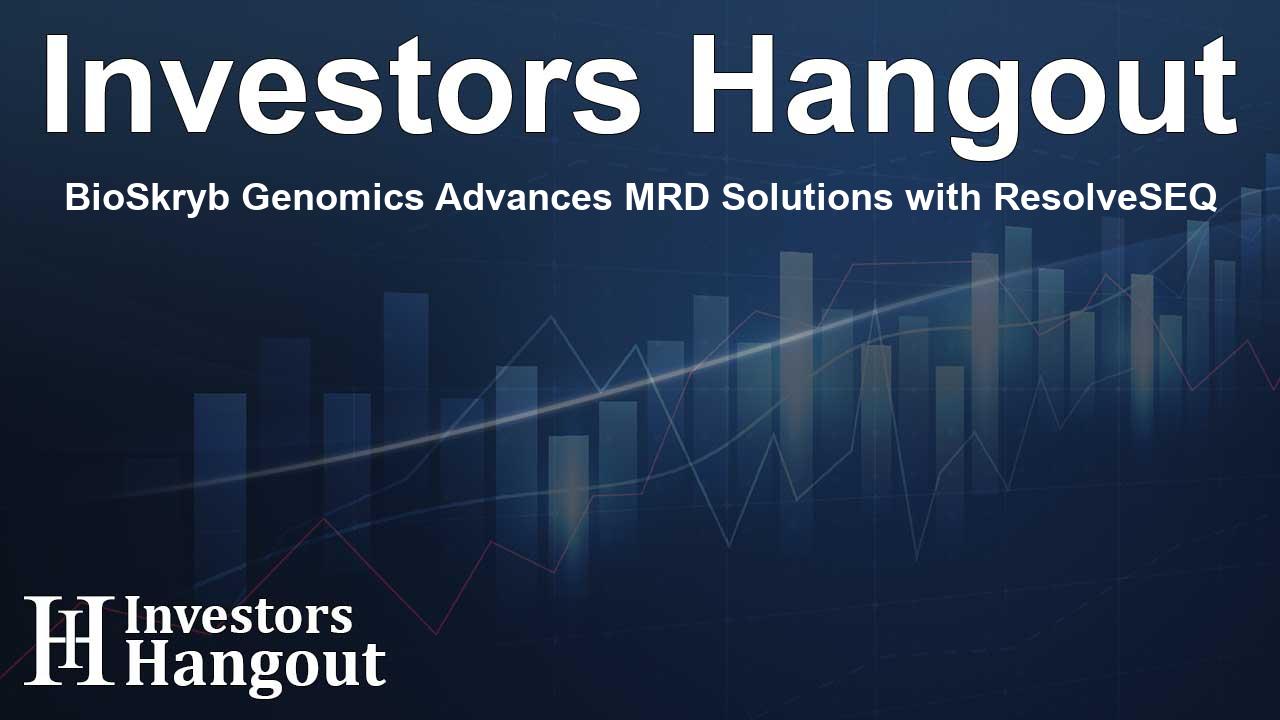BioSkryb Genomics Advances MRD Solutions with ResolveSEQ

Revolutionizing MRD Discovery with ResolveSEQ
BioSkryb Genomics has initiated a new chapter in the world of cancer research with the launch of ResolveSEQ MRD. This next-generation solution targets measurable residual disease (MRD), a critical area in hematologic malignancies. By focusing on single-cell and ultra-low input multiomics, BioSkryb provides researchers with unprecedented opportunities for cancer profiling.
Understanding Measurable Residual Disease
Measurable residual disease refers to the residual cancer cells that remain post-treatment. These cells can lead to relapses and pose significant challenges for patients and clinicians alike. The very capability to detect these residual cells is vital for stratifying risk and optimizing treatment, ultimately improving patient outcomes. However, conventional methods often fall short in identifying the reasons behind therapeutic failures, necessitating innovative approaches like ResolveSEQ MRD.
The Innovation Behind ResolveSEQ MRD
ResolveSEQ MRD marks a significant evolution in technology aimed at identifying and analyzing MRD cells. By incorporating advanced flow cytometry techniques, it assesses both genome and transcriptome features of these cells. This combined approach allows for a deeper understanding of cancer cell characteristics, which is essential in the precision oncology field.
Key Features of ResolveSEQ MRD
The ResolveSEQ MRD initiative features:
- Comprehensive Analysis: The technology executes paired genome and transcriptome sequencing on the identified MRD cells, allowing for detailed molecular profiling and insights.
- Clonal Evolution Insights: By mapping the evolution of these cells, ResolveSEQ MRD provides valuable information on how and why certain cells evade treatment.
- Enhanced Risk Stratification: The ability to classify MRD-positive patients into varying risk categories empowers clinicians to tailor treatments more effectively based on individual patient profiles.
Addressing the Challenges in Hematologic Cancer
Charles Gawad, MD, Ph.D., Chief Scientific Officer and Co-Founder of BioSkryb Genomics, emphasizes the urgency of understanding MRD. He points out that while detecting MRD is critical, unraveling the underlying biological makeup of these surviving cells is equally important. This detailed knowledge is paramount for enhancing therapeutic efficacy and personalizing treatment strategies based on the unique characteristics of each patient's cancer.
Clinical Implications of ResolveSEQ MRD
The advent of ResolveSEQ MRD is set to change the landscape in clinical oncology. As MRD becomes increasingly pivotal in clinical trials, the insights it offers can significantly boost treatment decision-making. It not only enhances the precision of risk stratification but also drives the identification of novel therapeutic interventions tailored for each patient.
The Future of BioSkryb Genomics
BioSkryb Genomics is also launching the Certified Service Provider (CSP) Program, facilitating the distribution of ResolveSEQ MRD and their other advanced technologies. This initiative aims to strengthen partnerships with labs by providing expert training in BioSkryb's technologies, hence ensuring a comprehensive solution for institutions looking to integrate advanced MRD insights into their practices.
About BioSkryb Genomics
BioSkryb Genomics is committed to revolutionizing the realm of cancer diagnostics through its innovative technologies. Located in Durham, the company harnesses cutting-edge tools for single-cell genomic and transcriptomic analysis. Their aim? To translate scientific findings into improved treatment methodologies and outcomes for patients facing complex diseases. For additional information, you can visit bioskryb.com.
Frequently Asked Questions
What is ResolveSEQ MRD?
ResolveSEQ MRD is a novel service from BioSkryb Genomics aimed at enhancing the understanding of measurable residual disease by analyzing single-cell genomic and transcriptomic data.
How does ResolveSEQ MRD improve patient outcomes?
By providing deeper insights into the biology of MRD cells, it assists in personalized therapy strategies and risk stratification, ultimately aiming to enhance treatment effectiveness.
What types of cancers does ResolveSEQ MRD target?
ResolveSEQ MRD is particularly focused on hematological malignancies like leukemia and multiple myeloma.
Why is understanding MRD important?
Understanding MRD is crucial as it helps identify residual cancer cells that may lead to relapses, enabling better treatment planning and improved patient outcomes.
How can researchers access BioSkryb's technologies?
Researchers can access BioSkryb's technologies through the Certified Service Provider (CSP) Program, which connects them with trained partners offering comprehensive solutions.
About Investors Hangout
Investors Hangout is a leading online stock forum for financial discussion and learning, offering a wide range of free tools and resources. It draws in traders of all levels, who exchange market knowledge, investigate trading tactics, and keep an eye on industry developments in real time. Featuring financial articles, stock message boards, quotes, charts, company profiles, and live news updates. Through cooperative learning and a wealth of informational resources, it helps users from novices creating their first portfolios to experts honing their techniques. Join Investors Hangout today: https://investorshangout.com/
Disclaimer: The content of this article is solely for general informational purposes only; it does not represent legal, financial, or investment advice. Investors Hangout does not offer financial advice; the author is not a licensed financial advisor. Consult a qualified advisor before making any financial or investment decisions based on this article. The author's interpretation of publicly available data presented here; as a result, they should not be taken as advice to purchase, sell, or hold any securities mentioned or any other investments. If any of the material offered here is inaccurate, please contact us for corrections.